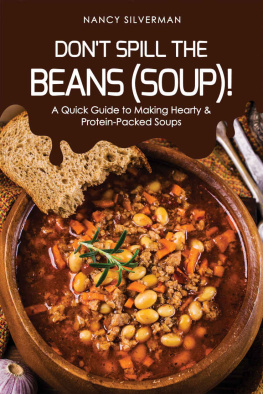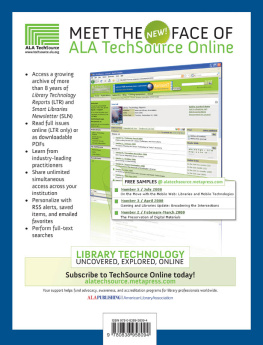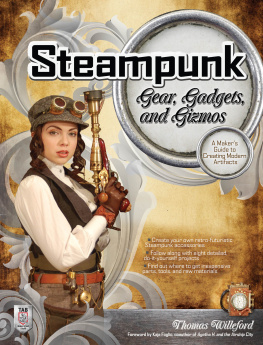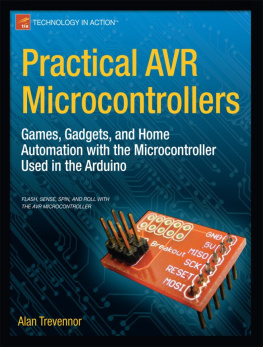Ruben Meerman - The Surfing Scientist. 40 DIY Science Gizmos
Here you can read online Ruben Meerman - The Surfing Scientist. 40 DIY Science Gizmos full text of the book (entire story) in english for free. Download pdf and epub, get meaning, cover and reviews about this ebook. year: 2008, publisher: HarperCollins Australia;HarperCollins Publishers, genre: Children. Description of the work, (preface) as well as reviews are available. Best literature library LitArk.com created for fans of good reading and offers a wide selection of genres:
Romance novel
Science fiction
Adventure
Detective
Science
History
Home and family
Prose
Art
Politics
Computer
Non-fiction
Religion
Business
Children
Humor
Choose a favorite category and find really read worthwhile books. Enjoy immersion in the world of imagination, feel the emotions of the characters or learn something new for yourself, make an fascinating discovery.

- Book:The Surfing Scientist. 40 DIY Science Gizmos
- Author:
- Publisher:HarperCollins Australia;HarperCollins Publishers
- Genre:
- Year:2008
- Rating:3 / 5
- Favourites:Add to favourites
- Your mark:
- 60
- 1
- 2
- 3
- 4
- 5
The Surfing Scientist. 40 DIY Science Gizmos: summary, description and annotation
We offer to read an annotation, description, summary or preface (depends on what the author of the book "The Surfing Scientist. 40 DIY Science Gizmos" wrote himself). If you haven't found the necessary information about the book — write in the comments, we will try to find it.
Check out all the toys and gizmos you can make with simple household stuff! From Mexican jumping beans to a diving octopus and a popcorn lava lamp, youll be whizzing and spinning like crazy. Watch out you dont get dizzy! Ages 7-12.
The Surfing Scientist. 40 DIY Science Gizmos — read online for free the complete book (whole text) full work
Below is the text of the book, divided by pages. System saving the place of the last page read, allows you to conveniently read the book "The Surfing Scientist. 40 DIY Science Gizmos" online for free, without having to search again every time where you left off. Put a bookmark, and you can go to the page where you finished reading at any time.
Font size:
Interval:
Bookmark:
For two expert do-it-yourselfers my champion speed-knitting mum and my master craftsman dad Ruben
Flashy new toys are great, but theres nothing quite like making your own. Adults get the same satisfaction from do-it-yourself home improvement projects. In this book, youll learn how to make forty cool gizmos and gadgets that spin, whirl, fly, glide, float, sink, fizz, jump and pop. All you need is a little know-how, a bit of patience and some basic household materials.
Others call this playing, but scientists and inventors call it learning. Ask any scientist and theyll tell you that being playful, curious and imaginative is the key to success. Take Sir Christopher Cockerell, who invented the hovercraft, for example. He tested his ideas by playing with coffee jars and cat food tins in the kitchen! Then theres Dimitri Mendeleyev, who invented the Periodic Table of Chemical Elements. This world-famous chart revolutionised the science of chemistry. Dimitris inspiration came from playing a simple card game called Solitaire.
Clearly, playfulness, creativity and a good imagination are very important in science and kids have all these in abundance!
The forty gadgets and gizmos in this book are not my original ideas. Some have been entertaining kids for hundreds of years. Take the Cartesian Diver on page 62, for example. Its named after the famous 17th century philosopher and mathematician called Ren Descartes.
Most of the gizmos were invented more recently. The Mexican Jumping Beans on page 8 require some aluminium foil. This amazing material didnt even exist a hundred years ago. My brother taught me how to make these jumping beans when I was about eight. The CD hovercraft on page 56 uses a plastic sports drink nozzle and a CD. Neither of those even existed when I was kid!
The average home is packed with materials for making gizmos and gadgets. Theres cling wrap and aluminium foil in the drawers. There are paper towels on the bench, straws in the cupboard and theres a whole fruit bowl full of cool chemicals. There are bread clips, paper clips, bottles, corks, jars, spoons, forks, screws, nails and balloons. Theres string, detergent, food dye, rice, vinegar, baking soda and vegetable oil you get the picture! With all this at your fingertips, youll soon wonder how you could ever be bored.
I hope you enjoy making the gizmos and gadgets in this book as much as I did. Each one will entertain, amuse and surprise you. They might even inspire you to pursue a career in science some day. Nobody knows where your journey will lead or what youll achieve, but one thing is certain. If you keep your playful curiosity and imagination alive, anything is possible. Above all, though, I hope these gizmos make you smile. Have fun and happy experimenting!
Oh yeah and happy surfing, too!
Mexican Jumping Beans
These creepy little critters flip-flop about. Use an Easter egg wrapper or colour your foil with a permanent marker for a fun looking bean. And keep your beans safe in an empty matchbox the kind that had big barbecue matches in it is best.
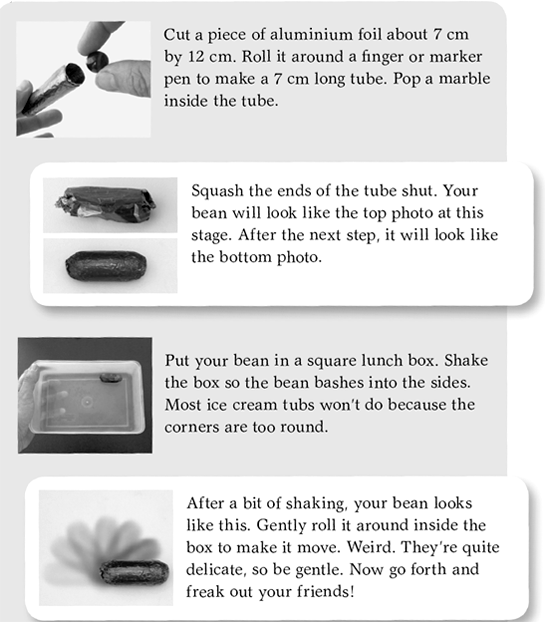
The amazing properties of aluminium make these ingenious little critters possible. Aluminium is a light, yet very strong, metal. Its used in many forms to make all kinds of things including planes, boats, soft drink cans, cars and window frames.
Because aluminium foil is thin, its very malleable (easy to deform). Each impact between the marble and the lunch box shapes your aluminium tube into a capsule with smooth round ends. Its an inside-out form of panel-beating.
When the bean is nice and smooth, the marble can roll from one end of the tube to the other. Because the aluminium foil is much lighter, it flips over when the marble rolls to one end. Then the marble can keep rolling to the other end before flipping the tube again. The flip-flop motion makes your jumping bean appear to be alive. Eeeek!
Real jumping beans are actually the seeds of a Mexican shrub that contain a little grub. These are the larvae of a small moth (Laspeyresia saltitans). The female moth lays her eggs on the young flowers. The flowers turn into hard seed capsules which trap the egg inside. They are light brown in colour and roughly the size of an uncooked popcorn kernel. After the egg hatches, the larva begins to feed on the pulp inside the seed. When the larva moves, the seed rolls around. Its not quite jumping but very surprising and amusing to watch. After a few months of jumping, the larva undergoes metamorphosis. The adult moth emerges through a tiny trapdoor in the seed. The female moths lay their eggs on another flowering shrub and the amazing cycle starts again.
Rockin Roll-on Doll
You can push them down but these dolls always roll straight back up again! Use the designs on pages 9091 or design your own. Colour in with your favourite team colours and youve got a cool desktop mascot.
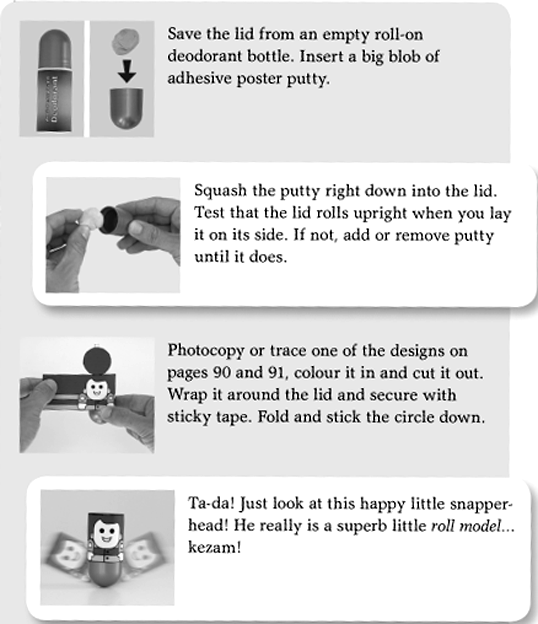
The top part of a roll-on deodorant bottle lid is a shape called a hemisphere (half a sphere). Adding a blob of poster putty makes it bottom heavy, so it always rocks back into the upright position. Scientifically speaking, thats because the putty and lid have a low centre of gravity.
The centre of gravity is a kind of average position for an objects overall mass. If it can, an objects centre of gravity always ends up in the lowest position possible. The smoothness of the hemisphere lets your doll roll back so its centre of gravity is as low as it can get.
Roll-on deodorant bottles have the same design as one of the worlds most useful inventions the ballpoint pen! Before it was invented, people used a quill (birds feather), which they sharpened and dipped into ink. It worked, but smudges were almost inevitable. The metal fountain pen replaced the quill, but it smudged easily too and worse still, tore through paper if you pressed too hard.
The first patent for a rolling ballpoint pen was filed in 1888 by John L Loud. The design had too many problems to be successful, but the idea was brilliant. Other inventors started experimenting with different designs, but most of the pens had big problems. It was a Hungarian newspaper editor called Lszl Br who finally made the idea work. Driven to frustration by fountain pens, Lszl and his brother George, who was a chemist, solved the problems. They successfully patented their design in 1938. It was so popular that Biro became the generic name for all ballpoint pens.
Acrobatic Cutlery
Heres a classic science trick with a fork, a spoon and a toothpick. Make sure you ask for an old metal fork and spoon to use, though. Youll be in big trouble if you bend the best ones in the drawer!
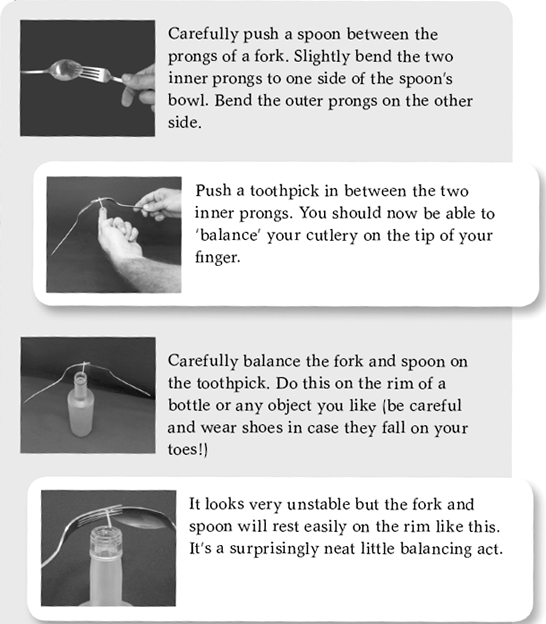
The arrangement you made looks like its balancing on the bottle, but its actually hanging. The difference between hanging and balancing is usually quite obvious, but this configuration gives a false impression.
Whether an object is balancing or hanging depends on where its centre of gravity is, relative to its points of support. The centre of gravity of a body is the average position for all its mass. For a marble, its right in its centre. But for a broom, the centre of gravity is closer to the brush, not half way up the handle. Thats because the mass of a whole broom is not distributed symmetrically. An object is balancing if its centre of gravity is above the point (or points) it is balancing on. Hanging is when an objects centre of mass is below its point of support.
Next pageFont size:
Interval:
Bookmark:
Similar books «The Surfing Scientist. 40 DIY Science Gizmos»
Look at similar books to The Surfing Scientist. 40 DIY Science Gizmos. We have selected literature similar in name and meaning in the hope of providing readers with more options to find new, interesting, not yet read works.
Discussion, reviews of the book The Surfing Scientist. 40 DIY Science Gizmos and just readers' own opinions. Leave your comments, write what you think about the work, its meaning or the main characters. Specify what exactly you liked and what you didn't like, and why you think so.


